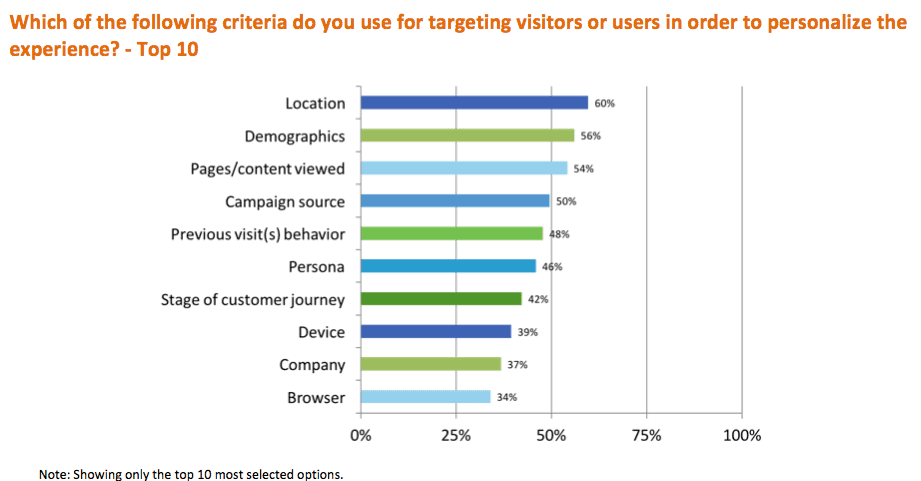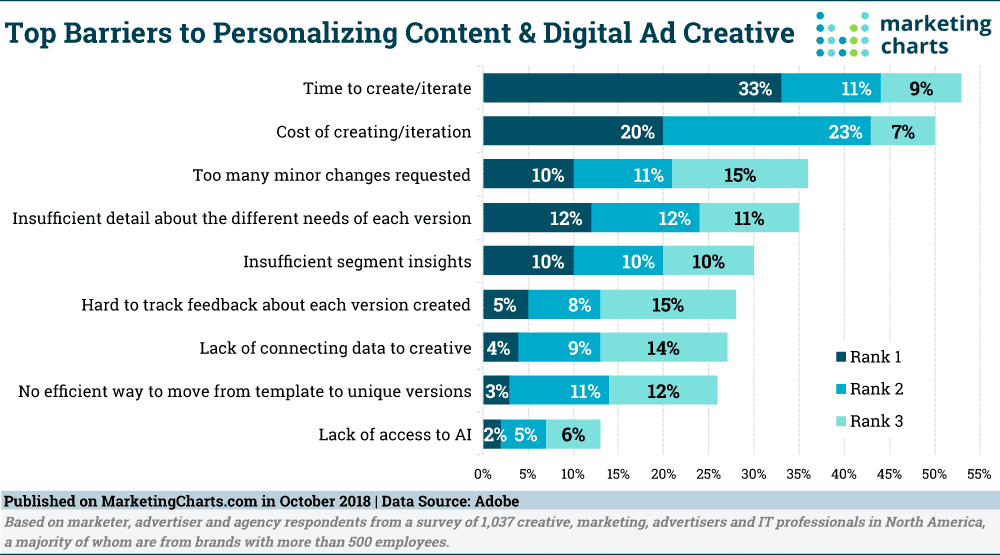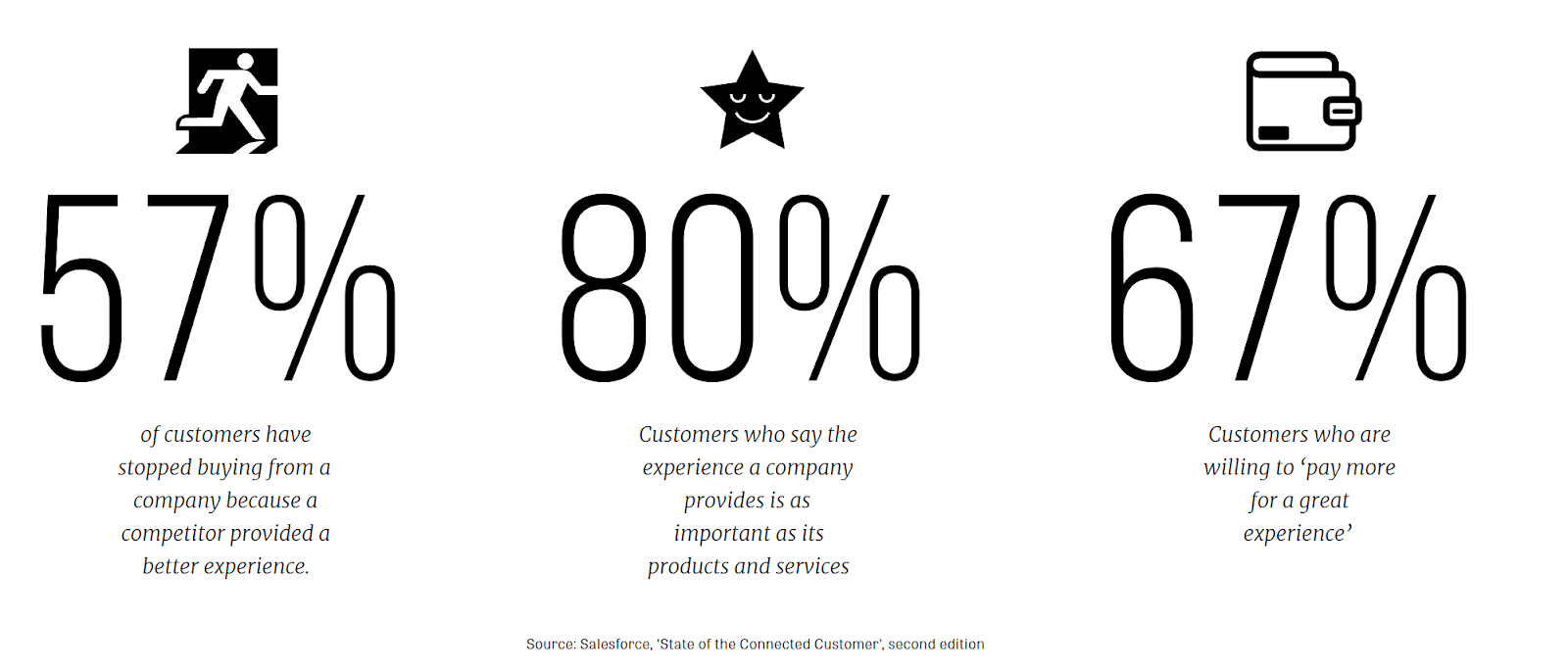Personalisation is so much more than simply addressing someone by their first name. Just imagine how many people you know called John. Chances are they don’t all like the same things or behave in the same way. The same principle applies when businesses are talking to their customers.
The difference is that you know John A and John B personally and can tailor your conversations to suit their interests and personality. The challenge for businesses is to reach that same level of interaction, most of the time without ever meeting their customers face to face.
Understanding the Deeper Picture
Up until recently, there has been a disproportional focus on technology to drive business development and boost customer retention, rather than concentrating on what each individual consumer is looking for or wanting to do next. Businesses are beginning to recognise these flaws in their approach, and, in response, many are beginning to adopt new ways of personalising their marketing messages. For example, some are extending their strategy from personalised email messaging to adopting a similar approach on their websites. However, data suggests that less than a third of companies think the strategy is actually working.
Research has also shown that most businesses are still focusing on basic data such as location and demographics to personalise their marketing efforts. Surprisingly, criteria such as previous behaviour, persona and stage in the customer journey feature much further down the list.

A survey from Adobe has revealed that under half of respondents said their company’s personalisation is extensive, while a recent McKinsey survey of senior marketing leaders found that only 15 percent of CMOs believe their company is on the right track with personalisation, meaning the majority are failing to reap the benefits that it offers.
Furthermore, despite personalisation being recognised as a vital aspect of UX, many marketers (59%) are failing to personalise content at scale, with time being cited as the biggest barrier to doing so.

The Challenge
While there is no denying that technology has played a key role in how businesses communicate with their customers, the practice of personalisation, in short, has not kept pace. Many personalisation programs are still driven primarily out of marketing and IT departments. However, a lot of optimisation is actually led by understanding how to engage more deeply and ensure that the relationship is being seeded for the long-term, rather than focusing simply on where your customers are located or how old they are.
At Pomegranate, the question we ask our clients time and time again is:
“How can you create personalised communications if you don’t know who your customers really are?"
Getting to Know Your Customers
Did you know that up to 95% of your customers' decision making is thought to be emotional?
Without knowing it, we are all subject to biases and prejudices, many of which are unseen and a function of our subconscious. Are your customers more strongly driven by the fear of losing or the chance of winning? Are they influenced by an experience that was in fact luck not skill? What compels people to act on desires or reject their needs? Proposition, context, timings and synchronicity all play important parts in how people make a decision and no two people are the same. The critical ingredient is emotion.
Our minds function under two thinking systems. System one is based on our automatic thinking; it’s fast, emotional, uncontrolled and unconscious. It is what gives us those quick and intuitive answers. System two is thinking in a more traditional sense; it is slow, logical, controlled, effortful and self-aware.
While we might like to think that most of our choices are based on system two, with a view to making considered and well-judged decisions, we do in fact rely more on system one. It is therefore vital for businesses to tap into this side of our emotional thought process, as that is what drives the biggest proportion of our decision making over the rational side of our brain.
Moreover, as these decisions are subconscious, it can be difficult for consumers to explain why they made that decision, yet research shows these decisions are not made randomly or by chance. They can be uncovered and explained.
Collecting Consumer Behaviour Data
As the motivations that influence consumer behaviour are so wide, a research mix including a variety of data tends to be the most robust. At Pomegranate, we employ a bespoke approach for each client, as collecting consumer insight can vary greatly depending on the project. Please contact our team here for more details.
How to Leverage What You Now Know
Once you have an understanding of how your consumers are behaving, it is more likely that your brand becomes the easy choice. There are several ways you can implement personalisation into your marketing strategy; here are just a few of them.
Improving Customer LoyaltyProvide a Unique Customer Experience
Consider All Consumer Touch Points
Get a Grip on Your Data
If you are experiencing high bounce rates on your website or low click through rates on your emails, then there is likely a gap between what the customer was expecting to see and what they are receiving.
Through the use of AI and other customer insights you have collected relating to likes, dislikes, behaviours and trends, personalisation enables you to present products and offers that are relevant to each customer. If a customer likes what they see, they will come back.
Every customer that arrives on your site will have arrived there from a different source using different searches based on their own requirements and tastes, so a one-fits-all approach is unlikely to suffice. While marketing to each individual can be a challenge, using consumer behavioural insights can help you to identify relationships between different customer segments and match them with the most relevant products/services you provide. E.g. you may decide to show a different home page banner to first-time visitors or offer a special promotion to return visitors.
While a website can form the hub of your online marketing efforts, it is important to consider how your customers interact with your business across all your touchpoints, be that online or in store. e.g. Can a customer’s online behaviour be used to influence how you interact when face to face? A good example is Sainsbury's Nectar scheme, whereby special offers are applied to your basket in store or online and your points balance is printed on your physical till receipt but can also be accessed online or via the app.
With so much data to analyse, it can be daunting knowing where to start, what is relevant and how to turn these into tangible insights that can be implemented across your whole strategy. More importantly, insights are ever evolving so it is important to keep using current data to ensure your ongoing approach remains on point.
Conclusion – The Proof
As customer expectations continue to shift, today’s consumers require businesses to understand their unique personal needs, objectives and circumstances. Statistics have shown that putting a customer’s needs first can have a positive impact on your bottom line. In Salesforce’s 2018 ‘State of the Connected Customer’ report, it was revealed that 80% of customers said the experience a company provides is as important as their product or service. And you can only offer the desired experience if you know who your customers are.

The Numbers Don’t Lie
- Marketers see an average increase of 20% in sales when using personalised experiences. (Source)
- Personalised emails deliver 6x higher transaction rates. (Source)
- Emails with personalised subject lines are 26% more likely to be opened. (Source)
- 74% of customers feel frustrated when website content is not personalised. (Source)
- Lack of content relevancy generates 83% lower response rates in the average marketing campaign. (Source)
Examples
There are several industry front runners raising the bar when it comes to using personalisation to drive business growth.
Netflix
In the past decade Netflix has undergone a phenomenal transformation. Using significant A/B testing based on three psychological principles to test and learn what consumers prefer, Netflix has become most people’s go-to source for online entertainment, so much so that 15% of the world’s web traffic goes to Netflix. Read more here
Uber
Most would think that Ubers biggest challenge would be getting its customers from A to B. In reality, Uber has focused its model on addressing its customers biggest pain point, which is in fact, the wait.
Uber has spent time and resources on researching a psychological principle called the Peak-end Rule – a concept that says people judge their overall experience on how they felt at its peak and its end, not the average of every moment of the experience. For consumers, this translates into 2 points throughout their journey, the best (or worst) parts of their experience. Read more on how Uber overcame these barriers to obtain over 75 million users worldwide. https://uxdesign.cc/how-uber-uses-psychology-to-perfect-their-customer-experience-d6c440285029
At Pomegranate, we can help you to understand the role emotion plays in a customer’s decision by using our Emotional Ignition testing facilities and use these insights to deliver digital experiences that get results. By testing neural activity, we can see the weaknesses of a brand, the digital experience, content and its products and help you to make changes that will achieve lasting customer satisfaction.

